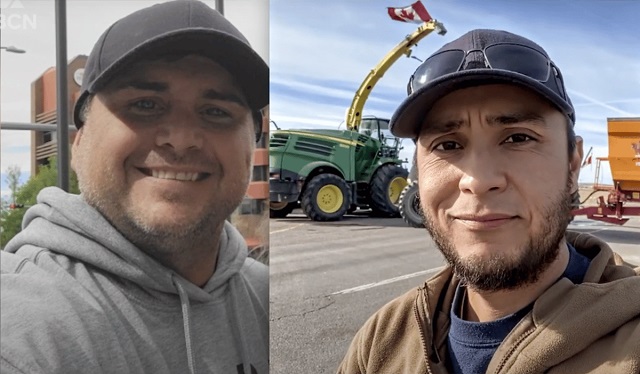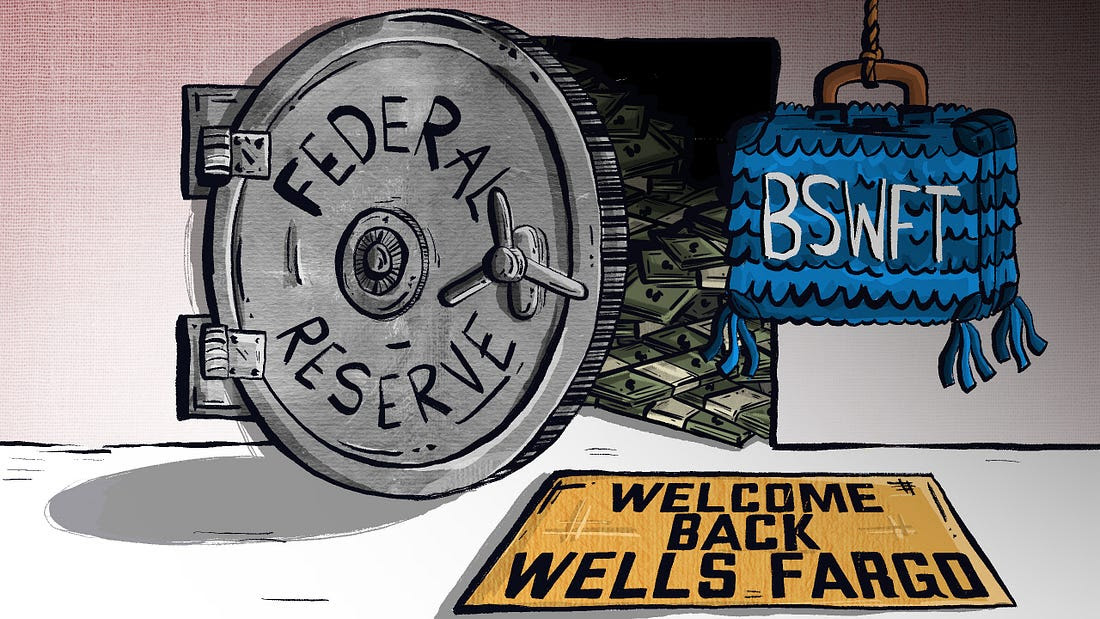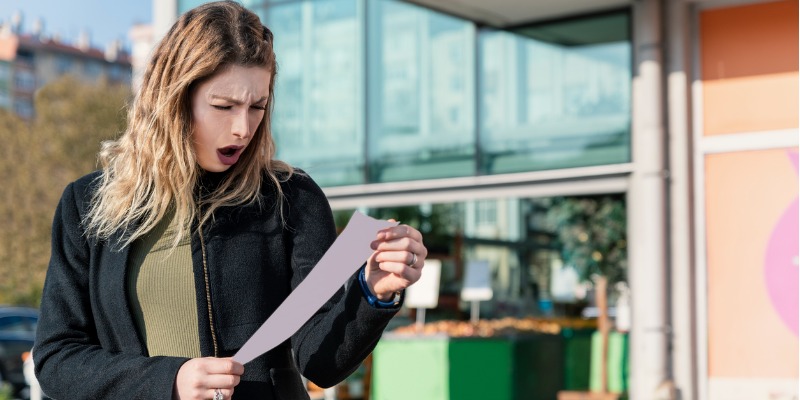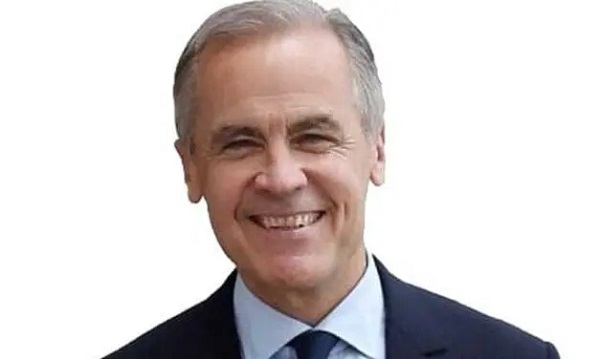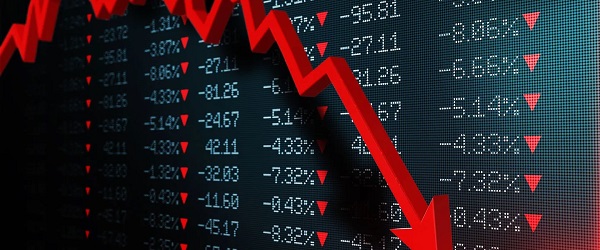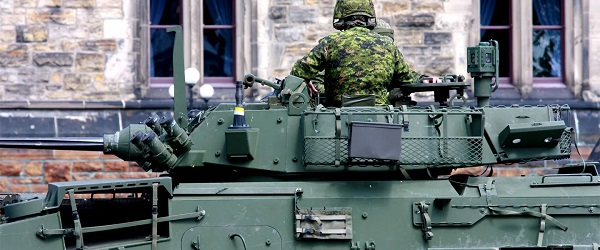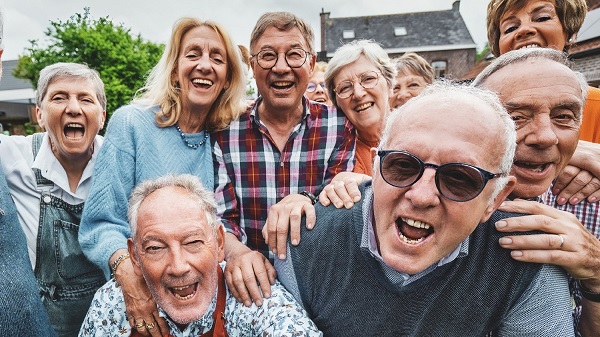International
OP-ED Trudeau’s Dangerous Pandering to Extremists Has Turned Canada Into a Safe Haven for Hate and Terror
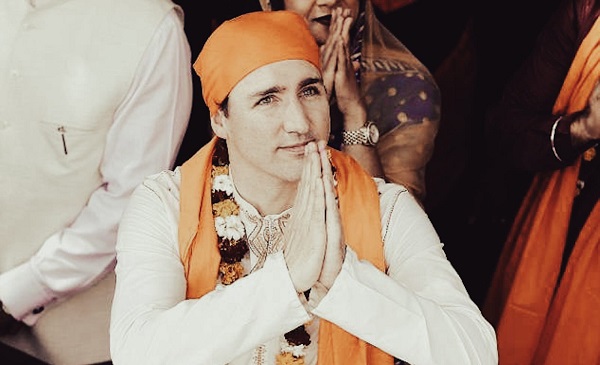
If these weren’t Khalistani activists but a group of white nationalists descending on a mosque or synagogue, Trudeau would be sprinting to the nearest camera to condemn it. Hate crimes would be filed faster than you could say “virtue signal.”
This past weekend in Brampton, Ontario, we saw a truly disturbing and shameful scene unfold. Khalistani extremists—yes, extremists—stormed a Hindu temple and reportedly assaulted its worshippers. For Hindus in Canada, who had come to this country seeking safety and freedom, this attack was a horrifying reminder that their places of worship, their cultural sanctuaries, are no longer safe. Such an assault on religious freedom should be universally condemned. Yet, the Canadian political establishment, led by Prime Minister Justin Trudeau and supported by NDP leader Jagmeet Singh, has done almost nothing but offer empty words and platitudes. It is increasingly clear that these incidents are not isolated—rather, they are a symptom of Trudeau’s reckless pandering to extremist factions within Canada’s diaspora communities.
As journalist Rupa Subramanya pointed out in her recent tweet, scenes like this should not be happening in a supposedly free and developed country like Canada. They’re scenes reminiscent of conflicts and vendettas one might see in parts of South Asia, not on the peaceful streets of Brampton. But thanks to Trudeau’s irresponsible courting of Khalistani separatist votes, this violence has been given fertile ground to grow right here in Canada.
Khalistani supporters argue they have a grievance with the Indian government. For years, they claim, India has targeted their community, cracking down on separatist leaders and activists with alleged ties to Khalistan here on Canadian soil. In the high-profile case of Hardeep Singh Nijjar, a prominent Khalistani figure in Surrey, the Trudeau government alleged that India was involved in his assassination. The RCMP, on Thanksgiving no less, all but confirmed that they believe Indian operatives were conducting activities on Canadian soil to target specific individuals. That’s a serious allegation—and it’s no surprise that it’s fueling the anger in certain parts of the Sikh community. I don’t dispute that these people have grievances, but grievances don’t justify terrorizing worshippers at a temple. There’s a clear line that’s been crossed.
Now, if this group wants to take a stand, they have every right to do so. Take your protest to the Indian consulate, gather on the steps of Vancouver’s art gallery, or march through the streets of Ottawa. That’s freedom of speech, and I’d defend their right to do it. But targeting a Hindu temple? That’s a desecration of a sacred space. What happened in Brampton wasn’t just a protest; it was an act of intimidation, even terror. And if we’re going to call a spade a spade, let’s use Canada’s own hate speech laws, which are weaponized regularly to police “wrongthink” in other cases. When violence and harassment are unleashed at a place of worship, it becomes a tool of terror—plain and simple. Even though I’m a staunch defender of free speech, we live under Canada’s hate speech regime, and it’s high time we see it applied evenly.
Here’s the kicker: if these weren’t Khalistani activists but a group of white nationalists descending on a mosque or synagogue, Trudeau would be sprinting to the nearest camera to condemn it. Hate crimes would be filed faster than you could say “virtue signal.” But in this case, we see silence and selective outrage from Canada’s so-called “defenders of diversity.” Why? Because Trudeau and Singh know they need the support of certain diasporas to maintain their coalition. They’re so tangled up in their own identity-politics web that they’ve rendered themselves incapable of taking a stand on principle.
The roots of this problem are Trudeau’s obsession with identity politics and his willingness to appease extremist voices within diaspora communities in exchange for votes. He’s aligned himself with Jagmeet Singh, whose support base includes those who sympathize with the Khalistani movement, and who has a long record of soft-pedaling the issue of Khalistani violence. For years, Trudeau and Singh have played a dangerous game, tacitly encouraging these factions to push the boundaries of what’s acceptable. Now, that same extremism has spilled into the open, right here in Canada.
Click to link to the National Post
In a National Post Article dated Nov 3 2024, Former Canadian cabinet minister Ujjal Dosanjh, a Sikh himself and a Canadian patriot who’s stood up to the radical fringes of his own community, is now sounding the alarm louder than ever about Justin Trudeau’s reckless pandering to Sikh extremism. Dosanjh is no fringe figure—he’s a former Liberal premier and a lifelong advocate for Canadian unity, even at great personal risk. He knows firsthand the damage that unchecked extremism can do to communities and to national stability. And now he’s pointing the finger directly at Trudeau.
According to Dosanjh, Trudeau’s obsession with catering to every vocal faction, no matter how extreme, has opened the floodgates for Khalistani separatists to operate openly within Canada. The same radicals who were emboldened by Canada’s political elites to support separatism are now terrorizing Hindu Canadians in their places of worship. For Dosanjh, the warning signs have been flashing red since the 1985 Air India bombing, which took the lives of 329 innocent people. But Trudeau, blinded by the need to appease every identity group, has allowed history to repeat itself.
Dosanjh argues that this “diversity at all costs” approach has led to the rise of an insidious form of intimidation that’s left peaceful Sikh Canadians too afraid to speak out against Khalistani extremism. Trudeau’s selective approach to multiculturalism—where every faction is catered to except the mainstream—has backfired spectacularly, leaving Canada vulnerable to the loudest, most radical voices. Most Sikhs in Canada don’t support the Khalistan movement, but Trudeau’s inaction has allowed this tiny, vocal minority to dominate the conversation and overshadow those who simply want to live in peace.
And Trudeau’s handling of the Hardeep Singh Nijjar affair? Dosanjh couldn’t be clearer: Trudeau’s approach was reckless and self-serving. Rather than addressing India’s concerns quietly, behind closed doors, Trudeau chose to escalate the issue on the global stage, causing a diplomatic disaster with one of Canada’s most important allies. In doing so, he’s not only jeopardized Canada-India relations but has risked the security of Canada’s Hindu, Sikh, and Indian diaspora communities. Why? Because Trudeau wanted to look “strong” to his own politically convenient voter base, using Canada’s House of Commons as his stage to grandstand.
And here’s the kicker. Dosanjh draws a stark comparison with the U.S., which recently dealt with a similar incident—an alleged plot against a Sikh separatist in American territory—through quiet diplomacy, respecting its allies without letting domestic politics interfere. Trudeau, on the other hand, saw an opportunity for grandstanding. Why? Because he knows identity politics is his only real play, and he’s willing to sacrifice both Canada’s unity and its global standing to keep his coalition intact.
Dosanjh doesn’t mince words: he sees Trudeau’s vision of Canada—a “post-national state” with no shared culture or common values—as an existential threat to the country’s future. Canada, Dosanjh argues, is not just a collection of identities; it’s a nation built on shared values, lawfulness, and mutual respect. But Trudeau, consumed by his obsession with catering to radical identity groups, is tearing the fabric of that unity apart. Instead of fostering a cohesive nation, Trudeau has allowed Canada to become a fragmented society, a breeding ground for extremism, and a place where national pride is quietly pushed aside for the benefit of loud, divisive voices.
So let’s stop pretending this is a question of free speech. What happened in Brampton was not about peaceful protest or political dissent; it was an act of hate and terrorism, plain and simple. Canada’s laws are clear, and so are the RCMP’s powers to act. Hate speech in Canada is legally defined as public incitement of hatred against any identifiable group—be it race, religion, or ethnicity—that can stir others to violence. What happened at the temple in Brampton goes beyond protest; it was targeted intimidation aimed at a religious community, nothing less than an assault on our nation’s values of tolerance and respect.
As for terrorism, Canada’s Criminal Code lays it out in black and white: any act that is politically or ideologically motivated and aimed at intimidating a public or religious group fits the bill. That’s exactly what these Khalistani extremists achieved by invading a temple, turning a space of worship into a site of fear. So let’s use the words Canada’s laws were built to define. This isn’t just disturbing the peace; it’s hate-fueled terror.
Here’s the blunt reality: the RCMP has the tools to stop this, to prosecute this violence, and to send a message that Canada will not stand by while extremists terrorize communities. And let’s not forget another essential tool—deportation. For any foreign nationals caught inciting or committing acts of violence, deportation is not only a right but a responsibility of any government worth its salt. Canada doesn’t need to tolerate foreign extremists on our soil; if they’ve come here to sow division, they need to be booted out and sent back. And if these radicals hold Canadian citizenship? Then we have prison cells ready for them. It doesn’t matter if they’re white, black, have blue hair, or green skin. If you break the law, if you cross that line from protest to violence, you belong behind bars, not on our streets.
Yet here we are with Trudeau at the helm, watching him bend over backward to avoid calling this violence out for what it is. He’s the same leader who preaches tolerance yet seems oddly selective about who deserves protection. If these were white nationalists outside a mosque or synagogue, Trudeau would be grandstanding in front of the nearest camera, denouncing it as terrorism—and he’d be right. So why the silence now? Is it because he’s too entangled in diaspora politics, relying on certain vote banks to keep his coalition intact? Or is it because he’s lost his nerve, fearful of offending the so-called “cultural sensitivities” of groups who’ve crossed the line?
The hypocrisy is staggering. Trudeau’s Canada is becoming a place where foreign grievances dictate the public peace and where divisive ideologies are allowed to take root. Pierre Poilievre and the Conservatives have a monumental task ahead. Trudeau’s game plan appears to be to break the system so badly that he can later point fingers and accuse the Conservatives of heartlessness when they try to fix it. But this is not heartlessness—it’s sanity. It’s common sense. It’s what any reasonable country would do to protect its people.
So let’s be absolutely clear: Canada is not short on people wanting to enter this country, to work hard, to respect its laws, and to build a future here. We don’t need to accommodate extremists or radicals. The way forward is simple: apply the laws we already have. Enforce our hate crime and anti-terrorism laws equally and unapologetically. If Trudeau won’t do it, then Canadians need a leader who will.
Canada needs to stand firm, prioritize its own values, and protect its citizens—not bow to the pressures of radicals who see our openness as weakness. If we want Canada to remain a place of peace, tolerance, and respect, we must enforce our laws without exception.
Subscribe to The Opposition with Dan Knight .
For the full experience, upgrade your subscription.
Crime
Tucker Carlson: US intelligence is shielding Epstein network, not President Trump
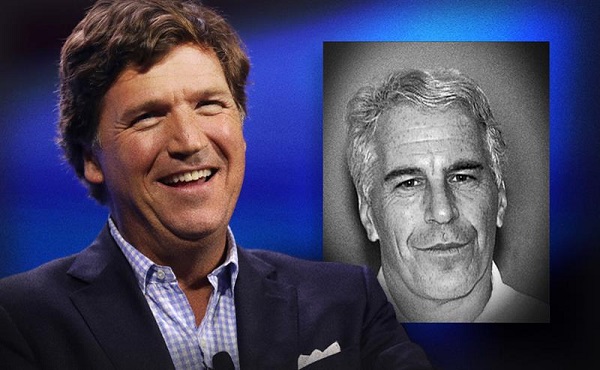
From LifeSiteNews
By Robert Jones
Pam Bondi’s shifting story and Trump’s dismissal of Epstein questions have reignited scrutiny over the sealed files.
Tucker Carlson is raising new concerns about a possible intelligence cover-up in the Jeffrey Epstein case—this time implicating U.S. and Israeli agencies, as well as Trump ally and former Florida Attorney General Pam Bondi.
During a recent broadcast, Carlson discussed U.S. Attorney General Bondi’s refusal to release sealed Epstein files, along with the FBI and DOJ announcement that Epstein did not have a client list and did indeed kill himself.
Carlson offered two theories for Bondi’s words. The first: “Trump is involved—that Trump is on the list, that they’ve got a tape of Trump doing something awful.”
But Carlson quickly dismissed that idea, noting he’s spoken to Trump about Epstein and believes he wasn’t part of “creepy” activities. He also pointed out that the Biden administration holds the evidence and would likely have acted if there were grounds.
10 Shocking Stories the Media Buried Today
#10 – Tucker Carlson has two theories why Pam Bondi won’t release the Epstein Files.
Theory #1: “Trump is involved.”
But Tucker thinks this explanation is not very likely.
That brings us to Theory #2, which is that Tucker believes… pic.twitter.com/Wy8l5NWQvZ
— The Vigilant Fox 🦊 (@VigilantFox) July 8, 2025
Carlson’s second theory: the intelligence services are “at the very center of this story” and are being protected. His guest, Saagar Enjeti, agreed. “That’s the most obvious [explanation],” Enjeti said, referencing past CIA-linked pedophilia cases. He noted the agency had avoided prosecutions for fear suspects would reveal “sources and methods” in court.
The exchange aired as critics accused Bondi of shifting her account of what’s in the files. She previously referenced “tens of thousands of videos of Epstein with children,” but later claimed they were videos of child pornography downloaded by Epstein. Observers say that revision changes the legal and narrative stakes—and raises questions about credibility.
#9 – Pam Bondi changes the story on the “tens of thousands of videos of Epstein WITH children.”
BEFORE: Tens of thousands of videos of Epstein WITH children.
AFTER: Tens of thousands of videos of child p*rn were DOWNLOADED by Jeffrey Epstein.
Credit: @Ultrafrog17 pic.twitter.com/v5I2uulyzA
— The Vigilant Fox 🦊 (@VigilantFox) July 8, 2025
Donald Trump also appeared impatient with the matter. “Are you still talking about Jeffrey Epstein? That is unbelievable,” he said in a video beside Bondi. This clip sparked backlash from longtime Trump supporters, including former Trump advisor Elon Musk, who reposted critical commentary on Trump and Bondi’s comments on X:
Musk previously alleged that Trump was himself implicated in the Epstein files. Although he retracted and apologized for this, he recently suggested that Steve Bannon was also implicated.
However, Carlson’s guest suggested that Bondi’s comments had another purpose. “The lie is a signal to everybody else involved,” he said. “The lie is not for you and me. The lie is for those implicated to say, ‘No matter what, we will protect you.’”
#7 – Guest leaves Tucker Carlson speechless with an interesting theory about the Epstein File cover-up.
“The lie is a signal to everybody else involved in the scheme that to the ultimate ends, the United States government will go to protect all of you.”
“The lie is not for you… pic.twitter.com/DWm3VwBmwF
— The Vigilant Fox 🦊 (@VigilantFox) July 8, 2025
The files in question remain sealed. It is unclear whether further revelations about Epstein will come to light, but Trump’s comments are not going to make the issue go away.
International
No more shoes off: Trump ends TSA’s decades-old rule
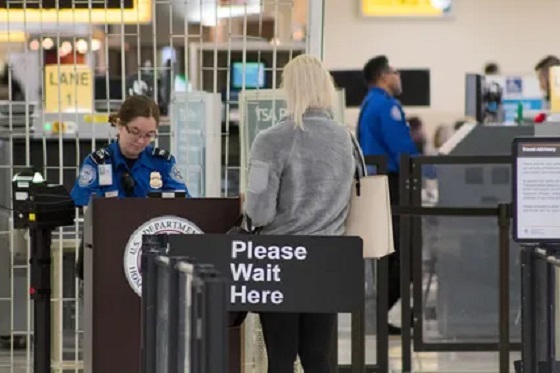
 MxM News
MxM News
Quick Hit:
The Trump administration is phasing out one of the most despised airport security policies in America: the requirement to remove shoes during TSA screening.
Key Details:
- Passengers will no longer be required to remove their shoes at airport security checkpoints in coming weeks.
- The change is rolling out at Baltimore, Fort Lauderdale, Cincinnati, Portland, Philadelphia, and Piedmont Triad airports.
- White House Press Secretary Karoline Leavitt confirmed the policy reversal on Tuesday morning.
Diving Deeper:
The Trump administration announced it is ending the much-loathed Transportation Security Administration rule requiring passengers to remove their shoes during security checks, a mandate that has frustrated Americans since its introduction nearly two decades ago.
The change is being implemented first at Baltimore/Washington International Airport, Fort Lauderdale International Airport, Cincinnati/Northern Kentucky International Airport, Portland International Airport, Philadelphia International Airport, and Piedmont Triad International Airport in North Carolina, according to CBS News. The policy will expand to additional airports nationwide in the coming weeks.
White House Press Secretary Karoline Leavitt shared the news on X, posting, “Big news from [the Department of Homeland Security]!” Tuesday morning. A TSA spokesman told The New York Times that “TSA and DHS are always exploring new and innovative ways to enhance the passenger experience and our strong security posture,” suggesting the policy change is part of broader improvements under President Trump’s leadership.
The policy to remove shoes was first instituted in 2006, stemming from the December 2001 attempt by Richard Reid, known as the “shoe bomber,” to ignite explosives hidden in his shoes on a flight from Paris to Miami. Reid was sentenced to life in prison after pleading guilty to terrorism charges, but critics have argued the policy punishes every American traveler for the actions of one terrorist nearly 25 years ago.
Before the update, travelers in the TSA PreCheck program were already exempt from removing shoes, belts, and jackets. Now, under President Trump’s directive to reduce pointless regulatory burdens, the policy is being eliminated for all travelers.
-

 International2 days ago
International2 days agoChicago suburb purchases childhood home of Pope Leo XIV
-

 Daily Caller2 days ago
Daily Caller2 days agoBlackouts Coming If America Continues With Biden-Era Green Frenzy, Trump Admin Warns
-

 Daily Caller2 days ago
Daily Caller2 days ago‘I Know How These People Operate’: Fmr CIA Officer Calls BS On FBI’s New Epstein Intel
-
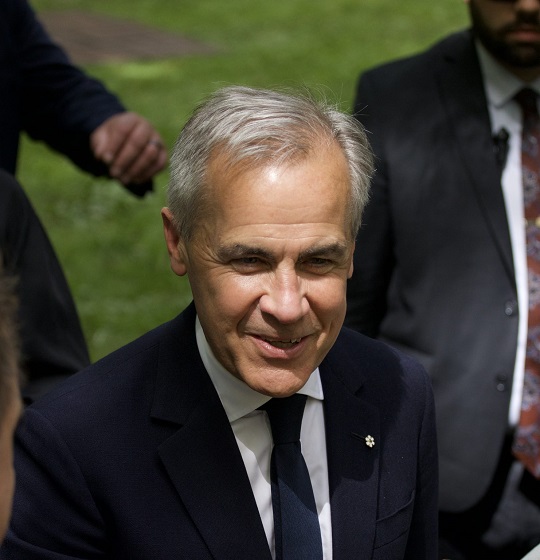
 Economy1 day ago
Economy1 day agoThe stars are aligning for a new pipeline to the West Coast
-
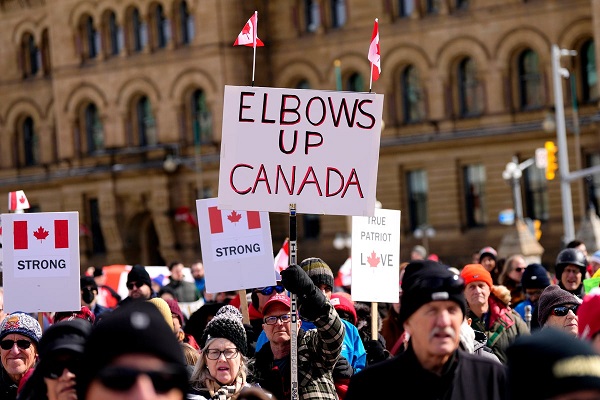
 National1 day ago
National1 day agoLiberal ‘Project Fear’ A Longer Con
-
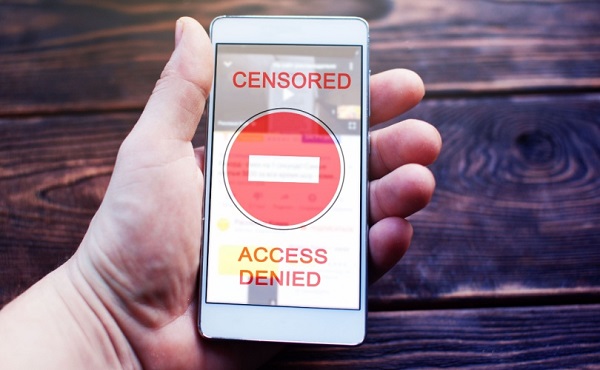
 Censorship Industrial Complex22 hours ago
Censorship Industrial Complex22 hours agoCanadian pro-freedom group sounds alarm over Liberal plans to revive internet censorship bill
-
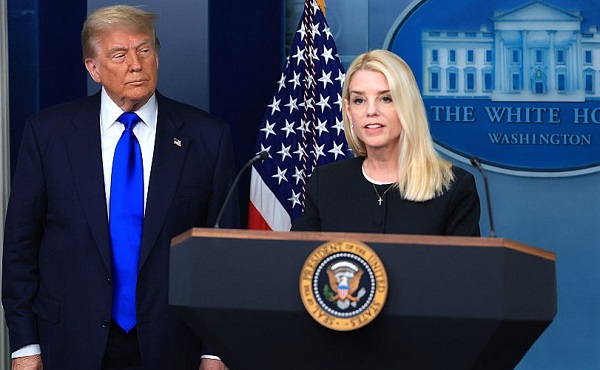
 Crime22 hours ago
Crime22 hours agoTrump supporters cry foul after DOJ memo buries the Epstein sex trafficking scandal
-
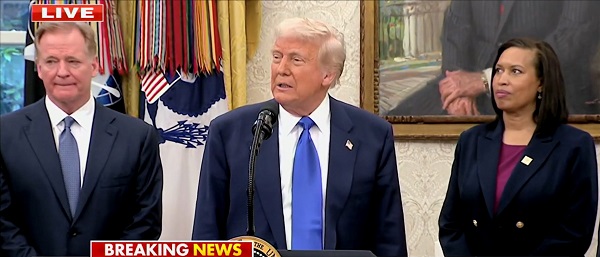
 Daily Caller22 hours ago
Daily Caller22 hours agoTrump Issues Order To End Green Energy Gravy Train, Cites National Security




